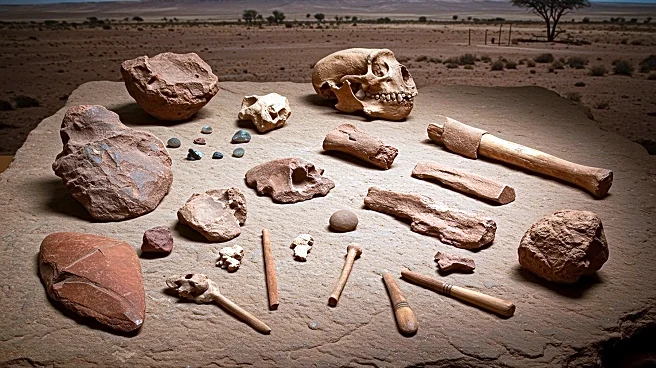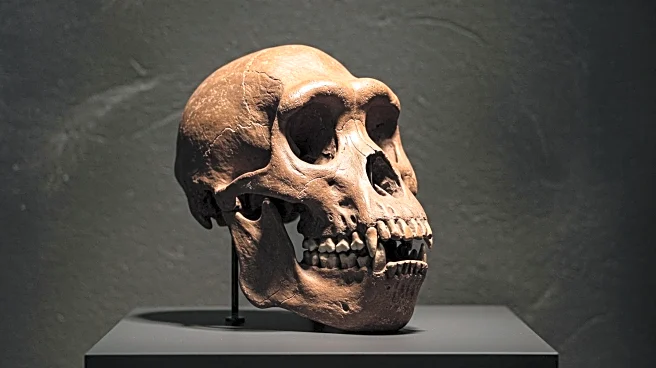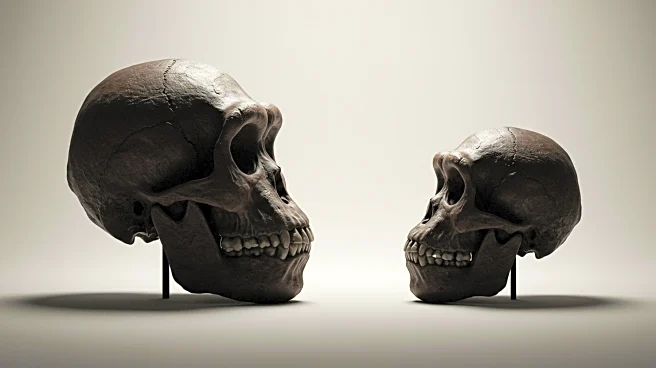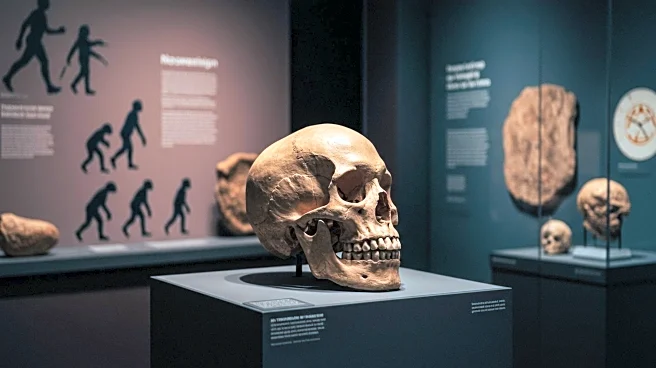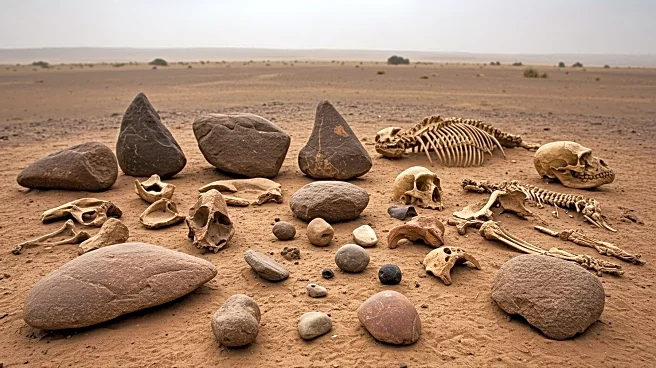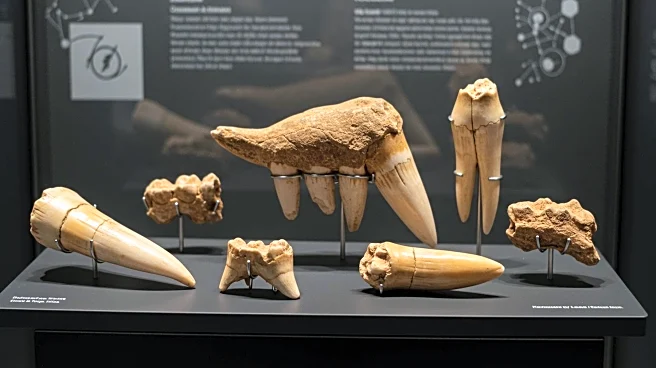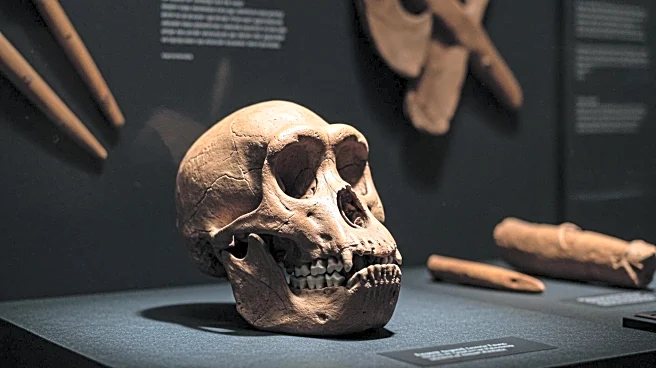What's Happening?
A team of international scientists has uncovered new fossils in Ethiopia, revealing that Australopithecus and the oldest specimens of Homo coexisted between 2.6 and 2.8 million years ago. The discovery includes a new species of Australopithecus, distinct from the well-known Australopithecus afarensis, famously represented by 'Lucy.' The research, led by Arizona State University, highlights the complexity of human evolution, suggesting it is more akin to a 'bushy tree' rather than a linear progression. The fossils, primarily teeth, were dated using volcanic ash layers, providing insights into the ancient environment and the interactions between these early hominins.
Why It's Important?
This discovery challenges traditional views of human evolution, emphasizing the coexistence of multiple hominin species. It underscores the non-linear nature of evolutionary processes, where different species may have shared habitats and resources. The findings could reshape scientific understanding of human ancestry and the evolutionary timeline, offering new perspectives on how early humans adapted to their environments. The research also highlights the importance of continued fossil exploration to uncover more details about our ancestors and their ecological contexts.
What's Next?
The research team plans to analyze the tooth enamel of the discovered fossils to understand their diet and ecological interactions. Questions remain about whether these species competed for resources or coexisted peacefully. Further fossil discoveries are needed to provide a clearer picture of the evolutionary relationships and environmental adaptations of these early hominins. The ongoing research aims to fill gaps in the understanding of human evolution and the factors that influenced the survival and extinction of different species.
